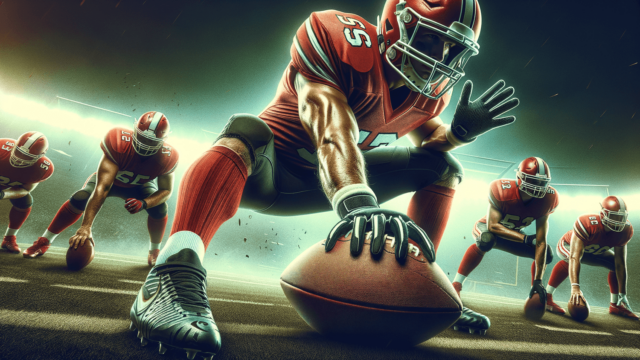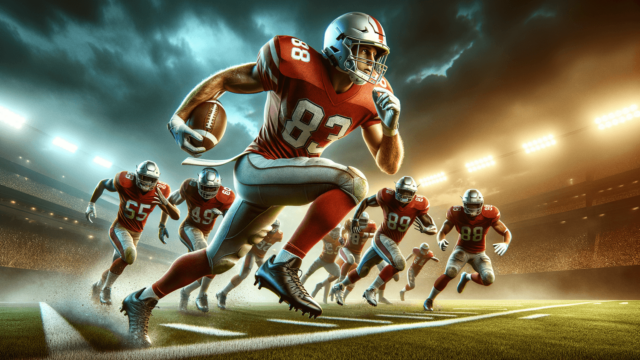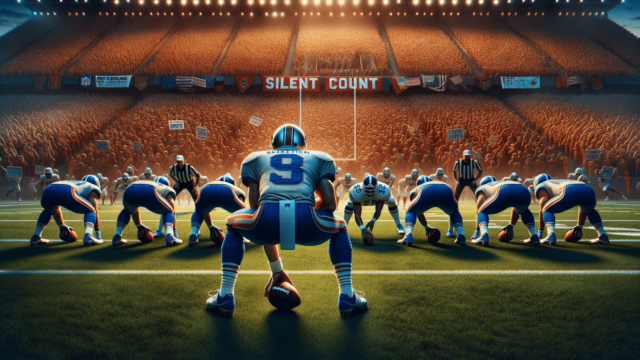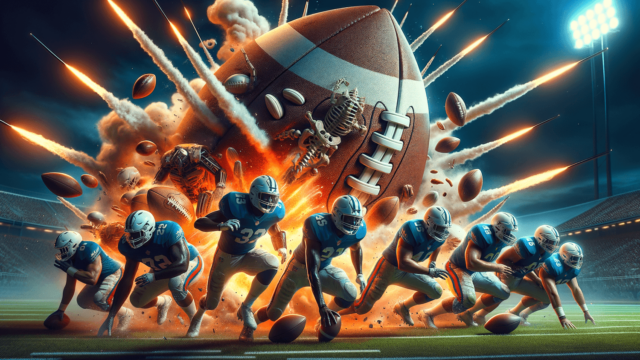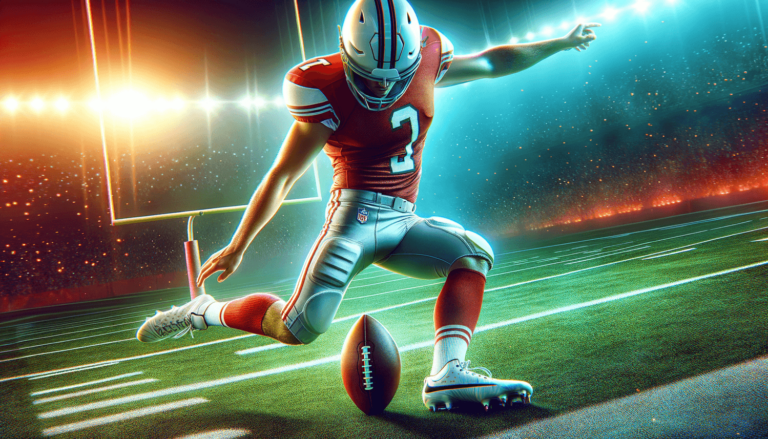
A long snapper in football is a specialized player responsible for executing the long snap, a precise, spiraling throw during punts, field goals, and extra-point attempts. Often a member of the special teams unit, the long snapper is crucial for successful kicking plays with their consistent snaps.
Understanding the Long Snapper’s Role
A long snapper in football is a specialized player tasked with executing the long snap, a specific type of throw used during punts, field goals, and extra-point attempts. This role is vital to the success of a team’s special teams unit, as consistent and accurate long snaps are essential for successful kicking plays.
Long Snap Fundamentals
The long snap requires the player to bend over and deliver a spiraling throw through their legs, targeting the holder for field goals and extra points, or the punter for punts. This throw usually covers 7-8 yards for field goals and approximately 15 yards for punts. Precision and speed are crucial for a long snapper to create ideal conditions for the kicker.
Technique and Skills
A long snapper must develop specialized skills and perfect their technique to ensure the ball reaches its target accurately and with the right velocity. Proper grip, stance, and release contribute to a consistent and efficient long snap. Additionally, the long snapper must be an effective blocker, especially during punt attempts, to protect the punter or kicker from being tackled or the kick being blocked.
Recruitment and Training
Due to the significance of their role, many teams invest in recruiting and developing long snappers. Talented long snappers are generally sought after in high school, college, and professional football. Specialized training camps and coaching are available to help these athletes refine their skills and improve their overall performance.
NFL Importance
In the NFL, the role of a long snapper has gained increased recognition, with some players now earning roster spots primarily for their snapping abilities. As the game has evolved and special teams plays have become more critical, dedicated long snappers have become a valuable commodity for teams seeking a competitive advantage.
Physical Attributes of a Long Snapper
While size and strength are typically advantageous for a long snapper, the key characteristics of this position are flexibility, agility, and hand-eye coordination. These traits contribute to the player’s ability to generate enough power to deliver the ball quickly while maintaining precision in their snap.
Long Snapper Responsibilities during Gameplay
In addition to perfecting the long snap, a long snapper must consider the following responsibilities during gameplay:
Blocking
After delivering the snap, long snappers transition into blocking mode, ensuring that opposing players do not break through the line and block the kick or tackle the holder or punter. This requires a quick and seamless shift from snapping to blocking.
Special Teams Coverage
On punts, long snappers are often expected to contribute to special teams coverage by chasing the punt and helping to tackle the punt returner. This requires speed, endurance, and effective tackling skills.
Teamwork and Timing
The success of a kicking or punting play does not solely rely on the long snapper. It requires a cooperative effort between the long snapper, holder, punter, and kicker. Practice and communication between these players are essential to synchronize their movements and maintain the right timing, ultimately leading to successful outcomes in high-pressure situations.
Preparing for High-Pressure Scenarios
Long snappers often face high-pressure situations in crucial moments of the game, such as game-winning field goals or punts that can change field position. Mental fortitude and situational awareness are essential attributes, as they allow the long snapper to remain calm and focused while executing their responsibilities effectively. Training in high-pressure scenarios prepares them to handle these situations with ease.
Frequently Asked Questions
After learning about the role of a long snapper in football, you may have some additional questions. Here’s a list of common questions and their answers to further deepen your understanding of this crucial position.
What makes a good long snapper?
A good long snapper possesses accuracy, consistency, and speed in their snaps, as well as strong blocking skills and agility. Additionally, mental fortitude and the ability to perform under high-pressure situations are essential traits that contribute to a successful long snapper.
Can long snappers play other positions?
Though a long snapper is often a specialized role, some players also play other positions, such as offensive linemen or tight ends. However, in professional leagues like the NFL, the increasing importance of the long snapper position has led many players to focus solely on this role.
How do long snappers practice and train?
Long snappers practice by refining their snapping techniques and blocking skills, often using various drills to improve their grip, stance, and release. Many athletes attend specialized camps or work with specific coaches to develop their skills further and prepare for high-pressure game situations.
How are long snappers evaluated during games and tryouts?
Long snappers are evaluated based on their accuracy, consistency, and speed in snaps during games and tryouts. Coaches and scouts also assess their blocking proficiency, ability to perform under pressure, and overall contribution to the special teams unit.
Why is the long snapper position essential in football?
The long snapper position is crucial because it ensures successful execution of punts, field goals, and extra-point attempts, directly influencing a team’s scoring opportunities. Their consistency, accuracy, and quick transitions to other responsibilities, such as blocking, make them vital contributors to a team’s special teams unit.
Featured Posts
- No pillar pages found.
